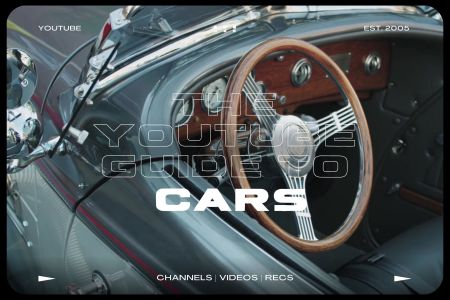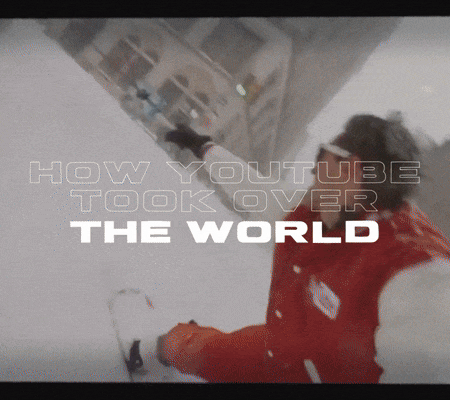Happy (early) birthday, YouTube. To celebrate the site’s 20th anniversary, we present: The InsideHook Guide to YouTube, a series of creator profiles, channel recommendations and deep dives about the viral, controversial, unstoppable video-sharing giant.
There’s a simple formula to becoming a viral YouTuber today: get an expensive car, then destroy it. Cody Detwiler, the Gen Zer behind WhistlinDiesel, burned a Ferrari F8 ($400,000) for 14 million views and mangled a Cybertruck ($100,000) for 24 million views. Suk Min Choi, who goes by Alex Choi, shot fireworks from a helicopter at a Lamborghini Huracan ($250,000), a stunt that might land him in prison. Even Jimmy Donaldson, who runs MrBeast, the most popular channel on YouTube, resorted to this formula when he used three military tanks to fire at a Lamborghini Gallardo ($200,000), then put another one of the supercars through a giant shredding machine. The result? Over 201 million views.
While these videos were hugely successful, they also encompass everything people hate about YouTube influencers: gross displays of conspicuous consumption, idiocy as entertainment and the legitimization of a kind of man-child mindset. But there’s no need to despair, as there’s another YouTuber who has racked up over 217 million views by using the exact opposite formula: getting a cheap car, then showing people how to fix it.
That would be Rich Benoit, the man behind the channel Rich Rebuilds. The car that launched his channel, back in spring of 2016, was a Tesla Model S. Normally, that’s also an expensive car — when you buy it in working condition. But Benoit paid just $14,000 for his used EV, which was flooded by salt water during Hurricane Sandy.
“When I first started doing YouTube, it wasn’t because I wanted to become rich and famous, like a lot of people do today,” Benoit tells InsideHook. “It was honestly mostly for documentation purposes.”
That explains why the first 30 videos on his channel are all just snippets, as short as 11 seconds long, with little-to-no narration. Benoit just needed a site that would let him upload videos for free, as there was only an intended audience of one: himself.
“I put them on YouTube and I made it public so that, when I was reassembling a car, I could go on my phone and look through what I was doing. Push a button, pause it, fix something. That was one of the few sites I could do it with,” he says. “And then things just kind of spiraled out of control from there.”
A lot of Tesla’s policies over the years have changed significantly because of the push I was making in the beginning.
– Rich Benoit, Creator of Rich Rebuilds
When Benoit says things spiraled out of control, his meaning is two-fold. He never expected to be a full-time YouTuber, a job he’s held for about four years after previously working in IT. He also never expected his hobby — figuring out how to fix a Tesla, before most Americans had even heard of their EVs — would end with him taking on what would become one of the most valuable companies in the world, and winning.
“I think that one of the largest impacts I’ve had was within the Tesla community itself,” Benoit says when asked about the influence of his channel, which currently has almost 1.5 million subscribers. “A lot of Tesla’s policies over the years have changed significantly because of the push I was making in the beginning.”
As he got further along in rebuilding his Model S, as his viewership grew and as he ran into more and more roadblocks with Tesla, who originally wouldn’t sell him parts to fix his car himself and looked down on DIY repairs, Benoit’s channel took on a new mission. Not only was he one of the most prominent creators on YouTube fixing electric vehicles, but he became a leading figure in the fight for “right to repair” laws for cars, which seek to change automaker policies that restrict the ability of owners to fix their own vehicles.
“Right to repair is huge. That was the thing I’ve been pushing for for the past eight years,” he says. “And it’s made huge progress. Tesla allows pretty much everything now. You can buy parts. You can service the vehicles yourself. They have online portals where you can do self-service. So they’ve changed a lot as a company because of the push that I was making in the beginning — causing a big stink.”
Benoit’s overarching goal, as he thinks about it now, and details in his book Going Fast and Fixing Things which was released in June, is not necessarily to teach people how to fix Teslas or even cars in general, but to change our current throwaway culture. Our society used to prioritize fixing broken, worn-out and obsolete goods, but more and more we’re being told we should throw things away and simply buy something brand new to replace it. Tesla just happened be the perfect company to satisfy both of these curiosities: they made cars he loved enough to fix during nights and weekends when he still worked as a help-desk technician at a financial firm; and they were also a company that would, in his experience, rather have customers buy a shiny new car than fix ones that were slightly damaged.
Over the years, Benoit found a few ways to hold Tesla’s feet to the flames. This includes his own YouTube videos — his second and fourth most popular videos are specifically targeted at calling out what he saw as the company’s absurd policies around repair, parts and used vehicles — as well as a number of other tactics that were less direct. Just a few months after uploading his first videos, he started a Facebook group for people to buy, sell and trade Tesla parts, which now has over 33,000 members. He leveraged media coverage, from a Vice documentary to multiple Joe Rogan podcast appearances, to spread the message about right to repair. He even co-founded his own EV repair shop, called the Electrified Garage, which currently has locations in Florida and Massachusetts.
“It’s funny. Now people buy [a Tesla]…not realizing that there’s people that have been fighting for this for so long,” Benoit says. “They’re like, Oh, this thing broke. I’ll go on my computer and I’ll fix it, not thinking that there’s someone that spent 20, 30, 40, 50 hours a week just grinding away [to make that possible].”
The YouTube Guide to Cars
Want to learn how to change your oil? Restore a vintage VW? Watch test drives before buying? These are the eight channels to know.Benoit’s undeniable dedication not just to fixing Teslas but all types of vehicles has put him in some surreal situations. He made the cover of Popular Mechanics with his V8 Tesla. He helped the actor Robert Downey Jr. convert a 1972 Chevrolet K10 pickup and 1965 Corvette into EVs for the show Downey’s Dream Cars. He even had a legendary German automaker ask him for a favor.
“I’ve had pretty large companies reach out to me to buy parts,” Benoit says. “I could probably tell you this — I’ve had Porsche reach out to me because they wanted a Tesla drive unit. At the time, I was one of the first people really taking them apart just for the heck of it to analyze it.”
While Benoit is obviously passionate about making tangible changes to the automotive industry and car culture at large, his popularity can be summed up by that last remark: “just for the heck of it.” His videos, while offering plenty of teachable moments, have an old-school YouTube feel, like you’re watching a ball-busting car guy who woke up one Saturday morning with a crazy idea (What if I put my flooded EV in a giant bag of rice?) and decided to spend the weekend making a video about it with his buddy’s camera. There are as many jokes, memes and asides as actionable tips, and that keeps viewers coming back to watch. He’s not some aloof host with a rarefied education. To longtime subscribers, he’s just “Uncle Rich.”
Despite his popularity and unique perspective, Benoit feels the same pressure that all YouTubers feel: to meet the secretive criteria that will satisfy YouTube’s almighty algorithm — the criteria that other car YouTubers are attempting to meet with their expensive supercar gets DEMOLISHED videos.
“You could do the same exact thing on two different days and have completely different results,” Benoit says. “I feel that sometimes this algorithm has a mind of its own. I think even YouTube doesn’t have control over it.”
Whether or not the algorithm still favors Benoit after another eight years on YouTube, he’s just happy doing what he loves. “Since day one it’s been cars, cars, cars,” he says. “I’ve always wanted to work with cars or work around cars in some way. It was my father that told me, ‘I wouldn’t hold onto that as a dream, you might want to get something that’s going to pay the bills and maybe you could have cars as a spare-time hobby.’”
Not only has working with cars been Benoit’s full-time job for years, but it’s been a lucrative one, which has allowed him access to a flashier stable of vehicles. When Benoit posted the first video that properly introduced his channel, in February 2017, he listed all of the vehicles he owned at the time, including a Tesla Model S (the flooded one), Jeep Grand Cherokee SRT8, Toyota Tacoma and Chevrolet Corvette C6 Z06. These days, he still has his beloved Corvette Z06, but he’s upgraded significantly elsewhere, adding a Rivian R1T, Porsche 911 Turbo, McLaren 720S, Dodge Charger Hellcat and a Sherp to his garage.
“I’m at a very rare point for car enthusiasts where I am very content with what I have right now,” he says. Then he pauses, thinking back on the cars he owned back when he first started his channel and was tinkering on his Tesla until midnight after his 9-to-5 job in IT.
“Actually, I was content then too.”
This article was featured in the InsideHook newsletter. Sign up now.

























